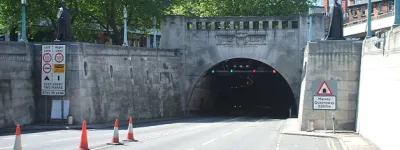The system of British road signs was first developed around the turn of the twentieth century, but its most radical overhaul came between the Second World War and the Worboys Report of 1964. The system that was developed over that time is still in use today, though during those years it was altered and discussed by numerous government committees, and came under fire from certain individuals over seemingly minor details.

It's the system that gives us green signs on primary routes, red triangular warning signs and - in fact - almost everything else that's recognisable and distinctive about the road signs that exist on every street and every road across the whole UK.
The signs that went before were a world apart and long past their sell-by date. But arriving at a new set of designs wasn't a quick process; it involved a huge amount of careful research, intelligent design work and perhaps unexpectedly a fair amount of argument too.
This article seeks to tell that story, and to discover how we ended up with the famous and highly acclaimed traffic signing system we use to this day. It is illustrated mainly using extracts from contemporary publications.
Many thanks to the people who provided the research and information for this article, particularly Jonathan Winkler for the use of his detailed research and recycling of his posts to SABRE, and Andy Emmerson, who provided many of the scanned images. Thanks must also go to Tom Sutch for kindly agreeing to let me use the title "From War to Worboys". I thought it sounded great, and then visited Tom's site Apex Corner to find it was already used there.
